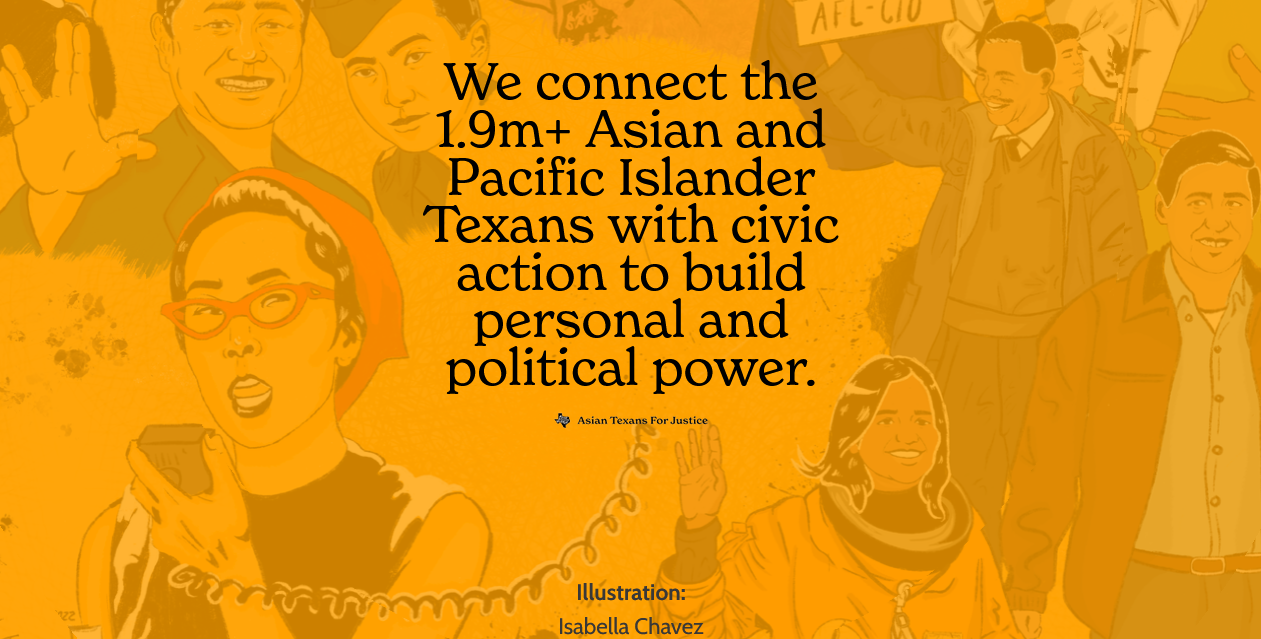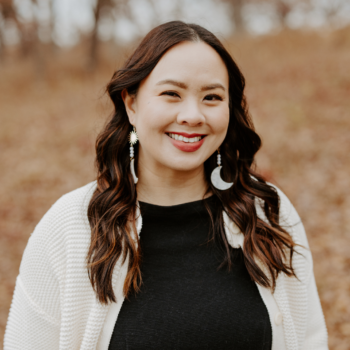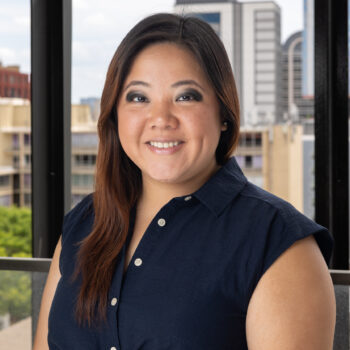For most Asian American activists in Texas, the past year has brought a constant cycle of crises that required immediate response. That is certainly the case for Asian Texans for Justice (ATJ), the only nonpartisan, pan-Asian American and Pacific Islander-serving (AAPI) organization statewide. Since ATJ’s founding in 2021, the pace of the work has been relentless given the seemingly never-ending cycle of crisis facing Asian American community members.
In some ways, this is no surprise, as ATJ evolved from a volunteer group to mobilize AAPI voters in 2020 and 2021, in recognition that a staffed organization was necessary to run civic engagement, policy advocacy, and coalition-building programs. Across Texas, there are over 1.9 million Asian American and Pacific Islanders representing over 50 ethnicities, speaking over 100 languages, and living in all corners of the state. Yet, the capacity of nonprofits addressing the needs of AAPI communities in Texas is not the same as it is in other parts of the country. Unlike established Asian American enclaves in California and New York, where there are longer histories of AAPI communities, AAPI communities in Texas, while growing rapidly, don’t have the same population density, are spread out across the state, and are still amassing political power. Additionally, organizations serving AAPI communities do not have robust infrastructure or access to philanthropic support in the same way as our counterparts do on the coasts.
Despite these constraints, ATJ and other AAPI organizations in Texas have had to meet a range of community needs. For example, the increase in targeted violence affecting AAPIs across the country has also affected Texans. On May 6, 2023, a mass shooting in Allen, a Dallas suburb resulted in the murders of eight people with seven more sustaining injuries. Among those killed were three members of a Korean American family and an engineer from India. While law enforcement continues to investigate whether the shooter acted alone, we know this horrific violence did not occur in a vacuum: the gunman was radicalized by white supremacist ideology and posted about his beliefs on social media before carrying out the attack.
ATJ’s rapid response work hasn’t been limited to targeted violence however. Along with coalition partners, we have also been organizing against a bevy of anti-immigrant land bills. SB 147, for example, was a proposed bill that prohibited citizens, businesses, or entities from China, Iran, North Korea, and Russia from making land purchases in Texas. While sponsors of bills like this claim that such legislation is a national security measure in order to protect agricultural and land interests, the rhetoric and impact of these bills are rooted in xenophobia and racism, and echo alien land laws targeting Chinese and Japanese immigrants during the early 1900s through World War II.
The Texas experience for AAPIs often elicits a wide range of emotions. While AAPIs in Texas celebrate our rapid growth and importance to our state’s demographic make-up, it is frustrating that our communities continue to be underrepresented in positions of power. There are only 6 Asian American members of the Texas House of Representatives, while no AAPI Texan has ever been elected to the Texas Senate or a statewide office. AAPIs in Texas have also demonstrated voting power in 2018 and 2020, with turnout rates growing in the triple digits. However, gun violence and antagonistic policies have evoked fears around personal safety and hesitation on the part of many who want to get more engaged. Coupled with the lack of philanthropic investments for groups like ATJ across the state, the crisis response work has led to burnout and fatigue for community advocates and volunteers.
Texas and Beyond
Crisis response isn’t just a Texas story. That’s what a new report by the Building Movement Project reveals about the challenges facing Asian American organizations that are responding to crises in their communities.
Over the past three years, many Asian American nonprofits have become frontline responders in the wake of community crises, providing direct support to victims and survivors, liaising with government stakeholders, and advocating for in-language services. These organizations are often cobbling together various aspects of existing programs, partnerships, and resources to temporarily support emerging needs.
By necessity, Asian American organizations have leaned on each other these last few years to navigate rapid response processes for victims, survivors, and community members in the aftermath of targeted violence. At the Asian American Leaders Table (AALT), a national network of Asian American organizations first convened by the Asian Law Caucus and individuals in the early days of the pandemic, nonprofit leaders – particularly those in emerging nonprofits serving new communities of Asian Americans – have been able to rely on a network for support in times of community crisis, as well as a space to strategize and share resources when rapid response needs arise.
Based on case study interviews with Asian American organizations that have been on the frontlines of addressing targeted violence, Balancing Act offers a toolkit for organizations needing to provide rapid response in real time, including suggested approaches, recommended roles, and promising practices.
Building Infrastructure in Advance of Crisis
For organizations like Asian Texans for Justice, as well as those interviewed in Balancing Act, there is a recognition that a reactive approach to community crisis cannot be the permanent response to an ongoing need. Reflecting on how the Sikh Coalition organized its rapid response in the aftermath of the FedEx facility mass shooting in April 2021, and how groups might prepare in advance of crisis, Satjeet Kaur, who was the Executive Director at the time, encouraged nonprofit leaders to consider: “[When crisis happens] what are the things that individual people and/or groups of people on your team should be responsible for thinking through?”
While there are many different ways to craft a rapid response infrastructure plan, here are some considerations and a graphic to help organizations and networks begin:
-
Identify organizations and staff who have the skills to play roles such as crisis coordinators, victim and survivor advocates, trained interpreters and translators, mental health counselors, pro bono lawyers and legal advocates, emergency funds administrators, and more
-
Develop translated materials in advance, written in everyday, accessible language, that provides information about basic resources within government and community agencies
-
Set up a mechanism in advance with clear guidelines on how organizations will receive donations and allocate and administer funds
-
Build and maintain relationships with local and regional partners in advance.
-
Identify organizational staff who can serve as liaisons with government officials and elected leaders.
-
Cultivate relationships with community leaders, stakeholders, and agencies in the local ecosystem and co-create a rapid response plan and process.
-
Develop partnerships with local media and identify potential media liaisons within organizational staff.
Building out rapid response infrastructure also requires relationship-building, which, as Asian Texans for Justice quickly discovered, is much more difficult to do in the midst of crisis. For example, while the Sikh Coalition is national in scope, the organization had pre-existing relationships with local community leaders who requested on-the-ground support from the Coalition. After the Lunar New Year shootings this past January in Monterey Park and Half Moon Bay, Aarti Kohli, Executive Director at Asian Americans Advancing Justice – Asian Law Caucus, noted that when a community is in a crisis, it can be hard to welcome outsiders: “For some communities, there is a sense of pride in taking care of a situation with their own resources. So it’s important for rapid response groups to take time to understand cultural norms and practices, to get a sense of the political motives and dynamics, to build relationships with local community and faith leaders, and ask for permission, before jumping in to help. We should be clear about what we don’t know, and not assume that all situations are alike.”
Organizations interested in developing their rapid response blueprint can begin by mapping out an ecosystem of staff roles, including crisis infrastructure as a budget line, and supporting their frontline staff. Funders should resource regional rapid response ecosystems as well as recognize and meaningfully support community needs beyond targeted violence and cycles of crisis.
Building Infrastructure for the Long Run
Developing rapid response infrastructure in advance of a crisis is necessary, but it isn’t enough when it comes to the long-term. Especially for groups like Asian Texans for Justice that are organizing in states with more conservative leadership, it’s vital to build relationships and solidarity within and across Asian American communities as well as with communities of color more broadly. That is why Asian American leaders are making the case for sustainable movement infrastructure in the following ways:
Shaping Crisis Recovery and Healing
When the initial outpouring of donations, philanthropic support, and media coverage subsides after a crisis, organizations are often left without the mechanisms or the internal infrastructure needed for sufficient crisis recovery – for impacted community members or for staff in frontline responder roles. Tending to long-term recovery requires volunteer and community engagement, investments in staffing and programming, and ongoing and unrestricted philanthropic support. Crisis recovery and healing can look like:
-
Supporting impacted community members even after the initial crisis subsides, through case management and low-barrier/no-cost mental health programs
-
Facilitating ongoing spaces for community processing, connection, and healing
-
Ensuring support for staff and volunteers during and after crisis, from grief counseling to adequate, accessible, and holistic healthcare
Developing Capacity For Learning And Collaboration
Asian American organizations are continuing to learn about a range of possibilities regarding community safety, often while providing frontline support to community members who have been directly impacted by violence. Many organizations are balancing the need to support community members in navigating the current legal system, while also creating space to learn about what safety, accountability, and justice might look like beyond our current system. As Alix Webb, former Executive Director at Asian Americans United, shared: “We need ongoing work around restorative justice, bringing people into that process, having them think about how it would work in their community? And how do we bring the process to elders and not just youth so there’s not this generation divide?”
Strategies for learning and collaboration include:
-
Engaging in an ongoing process to develop and sharpen organizational values around addressing community safety and structural violence.
-
Creating spaces to co-learn alongside community members, along with a feedback mechanism that meaningfully involves community input.
-
Providing learning sessions for staff at all levels within and across organizations.
Practicing Solidarity During And Between Crises
Building solidarity between crises can happen in multiple spaces, not just within nonprofit spaces, but alongside community members as well, through co-learning sessions on safety and abolition to intergenerational and cross-racial dialogues. This type of relationship building can also spur greater awareness around how community members of diverse backgrounds are similarly impacted by inequitable systems. As Jo-Ann Yoo, Executive Director at Asian American Federation, pointed out: “We are all in the system together because nobody’s investing in you. We need to have this conversation.” Practicing solidarity during and between crises might look like:
-
Deepening relationships between Asian American communities and organizations.
-
Building relationships with Black, Native, Indigenous, Arab, Muslim, Native Hawaiian, Pacific Islander, and Latinx leaders.
-
Dismantling wedge narratives that perpetuate anti-Black racism.
-
Building relationships between Asian Americans and their neighbors.
-
Speaking out to support communities of color.
Strengthening Community Power
In order to build community power, organizations have been creating space and time to understand the needs and priorities of their membership, curating courageous conversations, practicing internal reflection, and experimenting with different forms of political and popular education. Sasha Wijeyeratne, Executive Director at CAAAV, shares an important reminder: “Political education doesn’t mean everyone’s on the same page. It’s a space of constant contestation. It’s a space of constant education.” Strengthening community power can include:
-
Base building with communities, inclusive of age, class, background, and immigration status
-
Building a solid bench of leadership, particularly among people who are entering Asian American organizations over the past three years
-
Empowering youth to create or co-create programming and efforts that center social justice education
Building Capacity For Durable And Diverse Ecosystems
A diverse and durable movement ecosystem can enable organizations to focus on the roles and skills they wish to deepen and expand, rather than be in a position of responding to every crisis. Wijeyeratne noted that the robust Asian American ecosystem in New York City has been useful in clarifying CAAAV’s unique role in organizing poor and working class Asian immigrant communities in New York: “We’re not a rapid response group and we’re not an activist organization, so we don’t move that fast. We are glad that there are other people that can respond really quickly when something happens.” To create and maintain a diverse Asian American movement ecosystem, community members and funders could support projects that:
-
Identify the gaps and needs in a particular area, and build programs and efforts that serve the ecosystem broadly, rather than being competitive, redundant, or duplicative.
-
Build emerging organizations led by newly organized Asian ethnic groups, including those led by young people.
-
Support non-501(c)(3) formations such as mutual aid collectives and cooperatives, alternative media, and local and regional networks.
Hope and Optimism in the Midst of Difficulty
Every day, community members are struggling together, strengthening our ecosystems, inviting more people into this work, and showing up for each other in solidarity, even as they tend to crises.
We see this in Texas, where community members showed up to testify against the anti-alien land bills and the harmful rhetoric behind them. The state’s legislative session ended in May, and the bills were ultimately not passed. The work continues, however, as similar racist land laws are being proposed in other states and at the federal level as well. ATJ, in partnership with groups including Asian Americans Advancing Justice and the National Iranian American Council, continue to be part of national coordination calls to strategize, mobilize community members, and address these bills.
An example of cross-racial solidarity occurred earlier this year after the mass shooting in Half Moon Bay, California. In response, Bay Area Latinx and Asian community groups worked together to support the victims’ and survivors’ immediate and long-term needs. A statement released by the groups, including Services, Immigrant Rights and Education Network (SIREN), Asian Law Caucus, Puente, Coastside Hope, Ayudando Latinos a Soñar (ALAS), Chinese for Affirmative Action, and Stop AAPI Hate read, in part: “[W]hile we mourn, we have found solace in community vigils and rapid response coalitions across the region. That solidarity – among Asian, Latinx, Black, Indigenous, Pacific Islander, Arab, and Middle Eastern communities – is where we will find hope and love, and the community power to struggle for systemic change.”
As we grieve and move forward together in this work, we are reminded of two phrases that have emerged from Vietnamese and Sikh leaders that embody a balancing act: the community practices of chia buồn—a Vietnamese saying that means divide our sorrow—and chardi kala—a Sikh saying that means hope and optimism in the midst of difficulty. We hope the perspectives and ideas in this piece and the Balancing Act report are a way to both chia buồn and keep chardi kala across and beyond Asian American communities.


